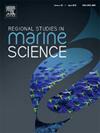Utilizing LISS-4 satellite imagery and support vector machine for mangrove and wetland mapping in part of coastal Maharashtra, India
IF 2.1
4区 环境科学与生态学
Q3 ECOLOGY
引用次数: 0
Abstract
Ecologically sensitive areas (ESAs) such as mangroves and wetlands are crucial for maintaining the biodiversity and provide many ecosystem services. However, these areas are increasingly getting susceptible to various climatic and non-climatic stressors. This study focuses on Mumbai and the coastal region of the Palghar district in Maharashtra, which is known for such ESAs and face pressures from developmental activities. The aim of the study is to analyse changes in land-use land-cover (LULC) patterns in these regions from 2010 to 2020, with a particular focus on mangroves and wetlands. To assess LULC changes in the study region, we utilised high-resolution LISS-IV satellite imagery to identify the ESAs accurately. A Support Vector Machine (SVM) classifier was employed due to its effectiveness in accurately classifying complex and overlapping land use classes. Additionally, the band rationing technique was used to highlight the desired land features. Accuracy assessment of the SVM classification yielded an overall accuracy of 85.57 % for 2010 and 92.05 % for 2020. The results revealed a 15 % decline in the mangrove cover in coastal Palghar, whereas Mumbai experienced a 16 % increase. Similarly, wetland cover in coastal Palghar showed a concerning 19 % decrease, with no notable change in Mumbai between 2010 and 2020. The results suggest that expansion of built-up areas is encroaching upon other land-use classes, highlighting urbanisation and development activities as a major contributor reducing the extent of coastal ESAs and vegetation cover. The findings of the study highlights the need for immediate measures to protect these critical areas and reduce the impacts of urbanization and unsustainable development.
求助全文
约1分钟内获得全文
求助全文
来源期刊

Regional Studies in Marine Science
Agricultural and Biological Sciences-Ecology, Evolution, Behavior and Systematics
CiteScore
3.90
自引率
4.80%
发文量
336
审稿时长
69 days
期刊介绍:
REGIONAL STUDIES IN MARINE SCIENCE will publish scientifically sound papers on regional aspects of maritime and marine resources in estuaries, coastal zones, continental shelf, the seas and oceans.
 求助内容:
求助内容: 应助结果提醒方式:
应助结果提醒方式:


